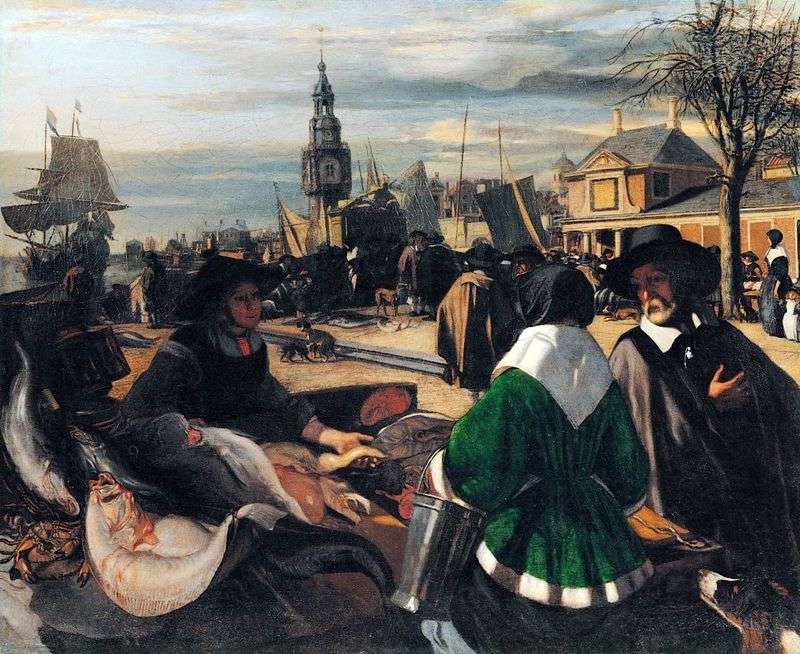
Emanuel de Witte is one of the few Dutch artists who managed to preserve the high dignity of art in the years when Dutch painting as a whole obediently submitted to a limited burgher worldview. Until the end of his difficult and long life, Witte remained faithful to the creative vocation, he brought the art of painting to a wide expanse of romantic transfiguration of prosaic reality, creating images full of genuine, unexpected for the Dutch art of tragedy.
In the works of de Witte there is a deeply hidden protest against the self-satisfied ossification of life that has penetrated all spheres of Dutch life in the last third of the 17th century. And the burgher society did not forgive the artist: the last thirty years of life, Witte did not have shelter over his head, wandered from one master to another, and finally at the age of seventy committed suicide. “The market in the port” belongs to the best works of the artist.
Trivial for Dutch painting, the plot serves as an excuse for creating in the picture an atmosphere of prey threatening languor and anxiety. Built on a combination of black, yellow, emerald green colors, the color gamut is strict and severe. This later creation of Witte embodies the entire anxiety of the artist and his dissatisfaction with life.
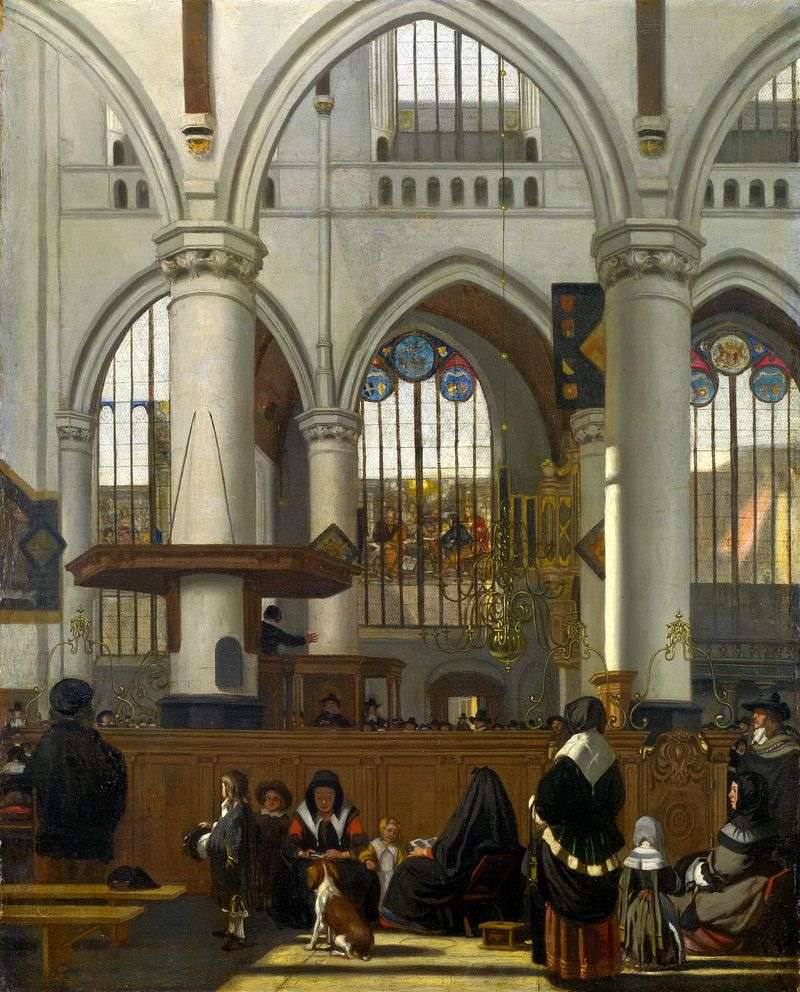 The interior of the Old Church in Amsterdam during the service by Emanuel de Witte
The interior of the Old Church in Amsterdam during the service by Emanuel de Witte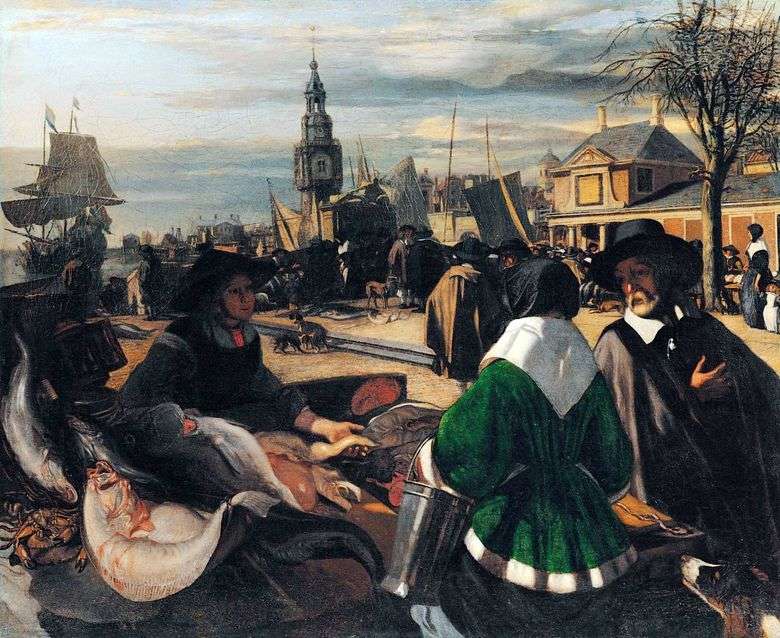 Mercado Portuario – Emanuel de Witte
Mercado Portuario – Emanuel de Witte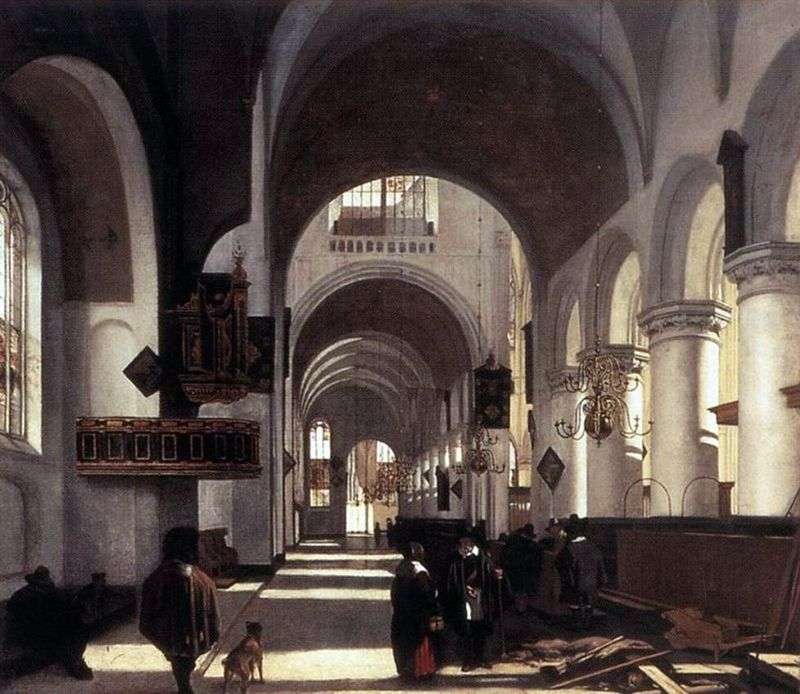 Church interior by Emanuel de Witte
Church interior by Emanuel de Witte Marché Portuaire – Emanuel de Witte
Marché Portuaire – Emanuel de Witte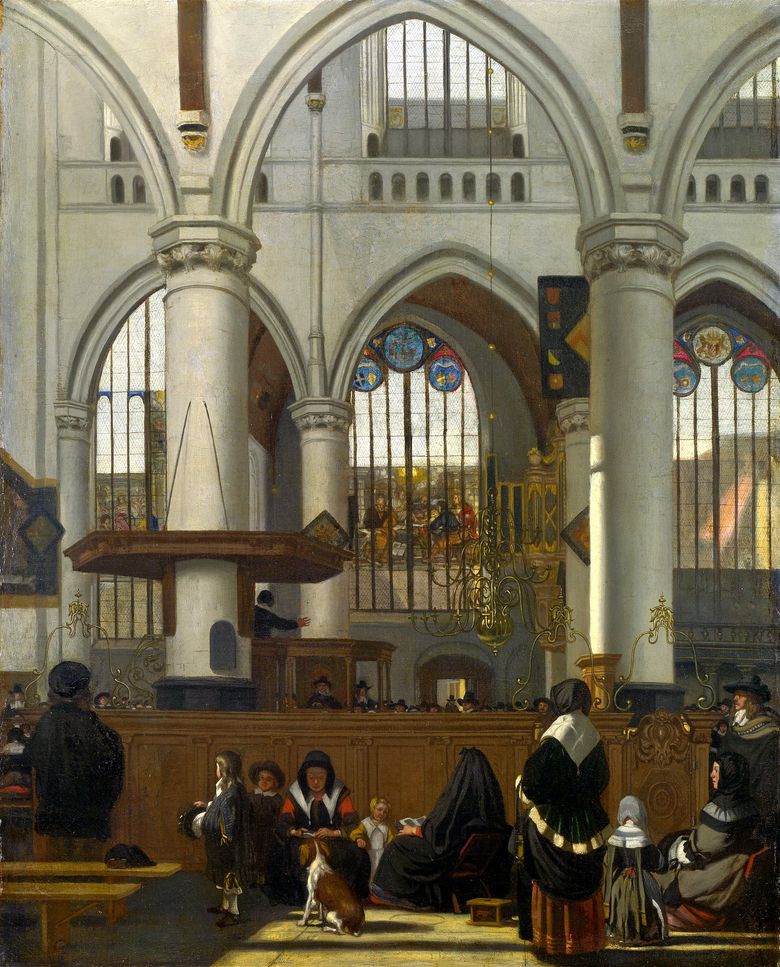 Intérieur de la vieille église d’Amsterdam pendant le service – Emanuel de Witte
Intérieur de la vieille église d’Amsterdam pendant le service – Emanuel de Witte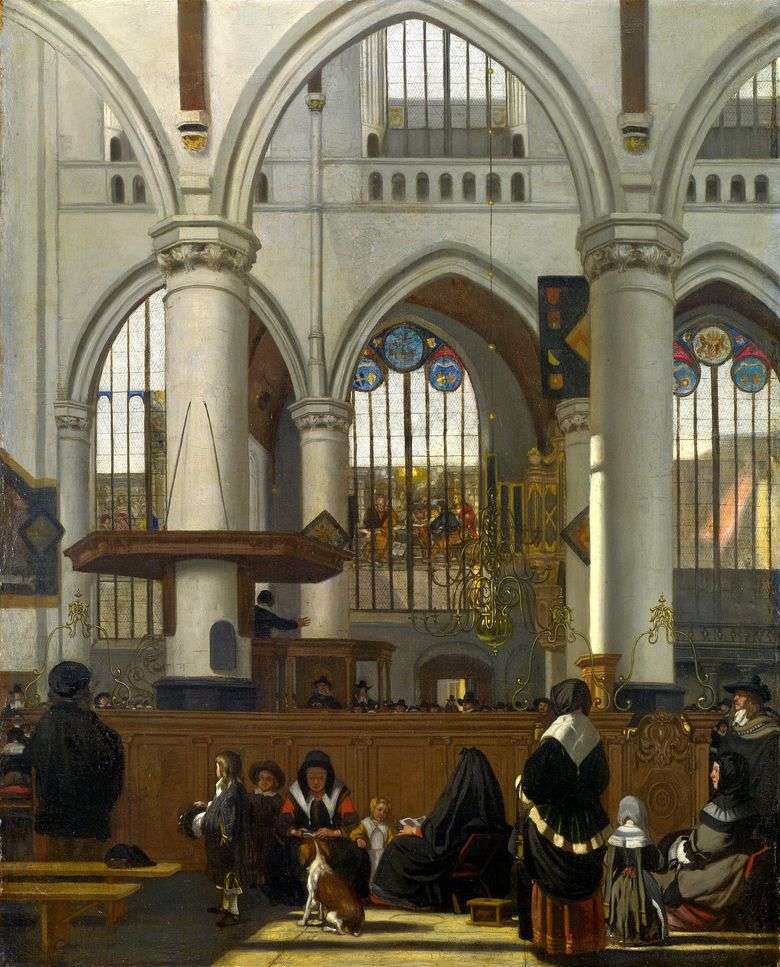 El interior de la Iglesia Vieja en Amsterdam durante el servicio – Emanuel de Witte
El interior de la Iglesia Vieja en Amsterdam durante el servicio – Emanuel de Witte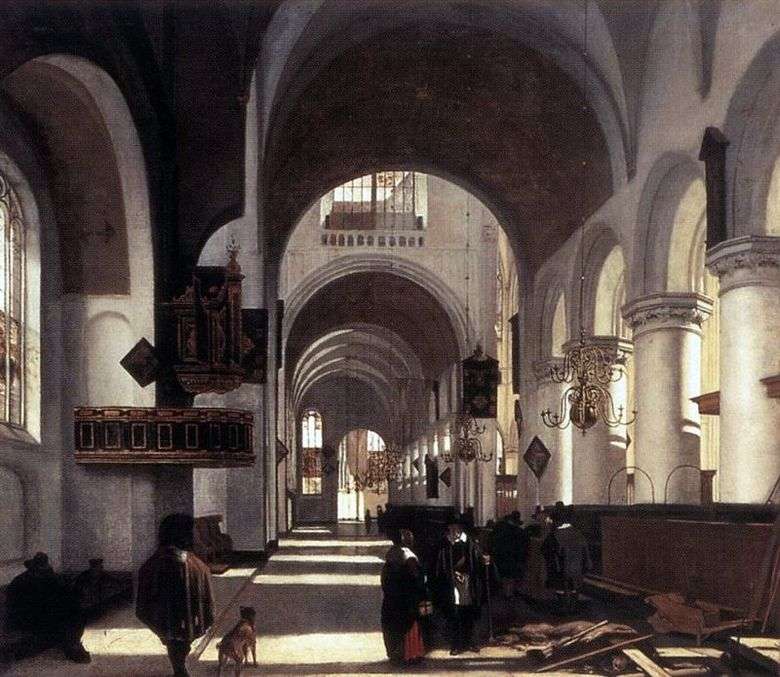 Interior de la iglesia – Emanuel de Witte
Interior de la iglesia – Emanuel de Witte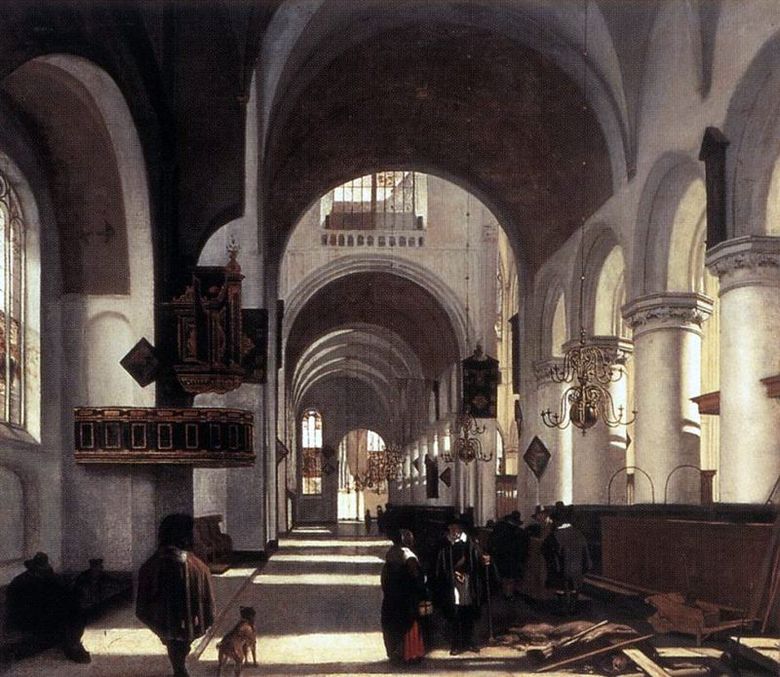 Intérieur de l’église – Emanuel de Witte
Intérieur de l’église – Emanuel de Witte